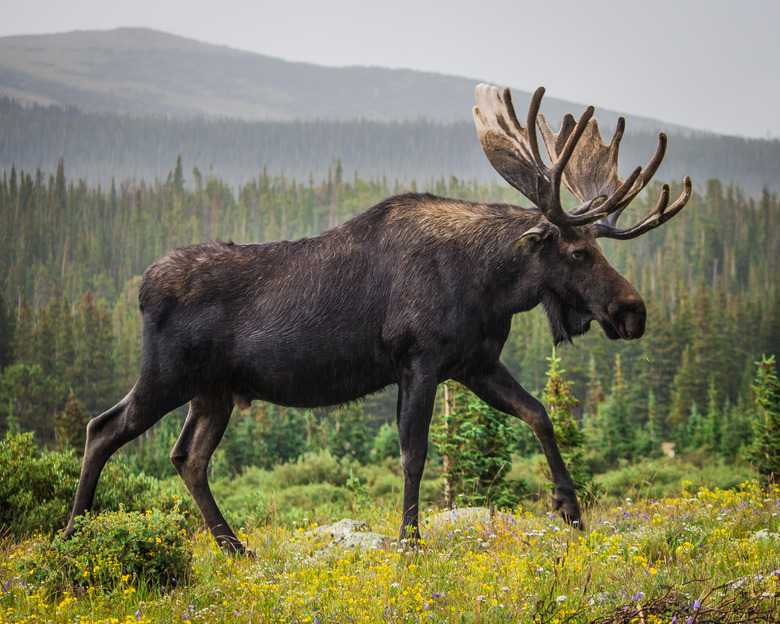Do Elk Have Ivory Teeth?
The elk or wapiti, which has the taxonomic name Cervus elaphus, once ranged all over the North American continent. Found today chiefly in the western United States, elk possess the rare distinction of having both antlers and ivory canine teeth, believed to have been bona fide tusks many thousands of years ago during the animal's evolution.
Characteristics of the Teeth
Characteristics of the Teeth
Among North American animals, only walruses and elk have ivory teeth. In walruses these are tusks, but in elk they are anatomically similar to the remaining teeth. These ivories, also called "buglers" or "whistlers," rest in the maxilla, or upper jaw, on each side of the incisors, or front teeth. In prehistoric times, before the elk wandered eastward across the Bering land bridge into what is now Alaska, these ivory teeth were perhaps 6 to 8 inches long.
Cite This Article
MLA
Crystal, Mike. "Do Elk Have Ivory Teeth?" sciencing.com, https://www.sciencing.com/do-elk-ivory-teeth-5251845/. 13 March 2018.
APA
Crystal, Mike. (2018, March 13). Do Elk Have Ivory Teeth?. sciencing.com. Retrieved from https://www.sciencing.com/do-elk-ivory-teeth-5251845/
Chicago
Crystal, Mike. Do Elk Have Ivory Teeth? last modified March 24, 2022. https://www.sciencing.com/do-elk-ivory-teeth-5251845/
